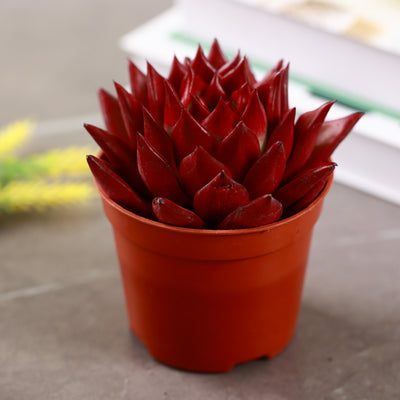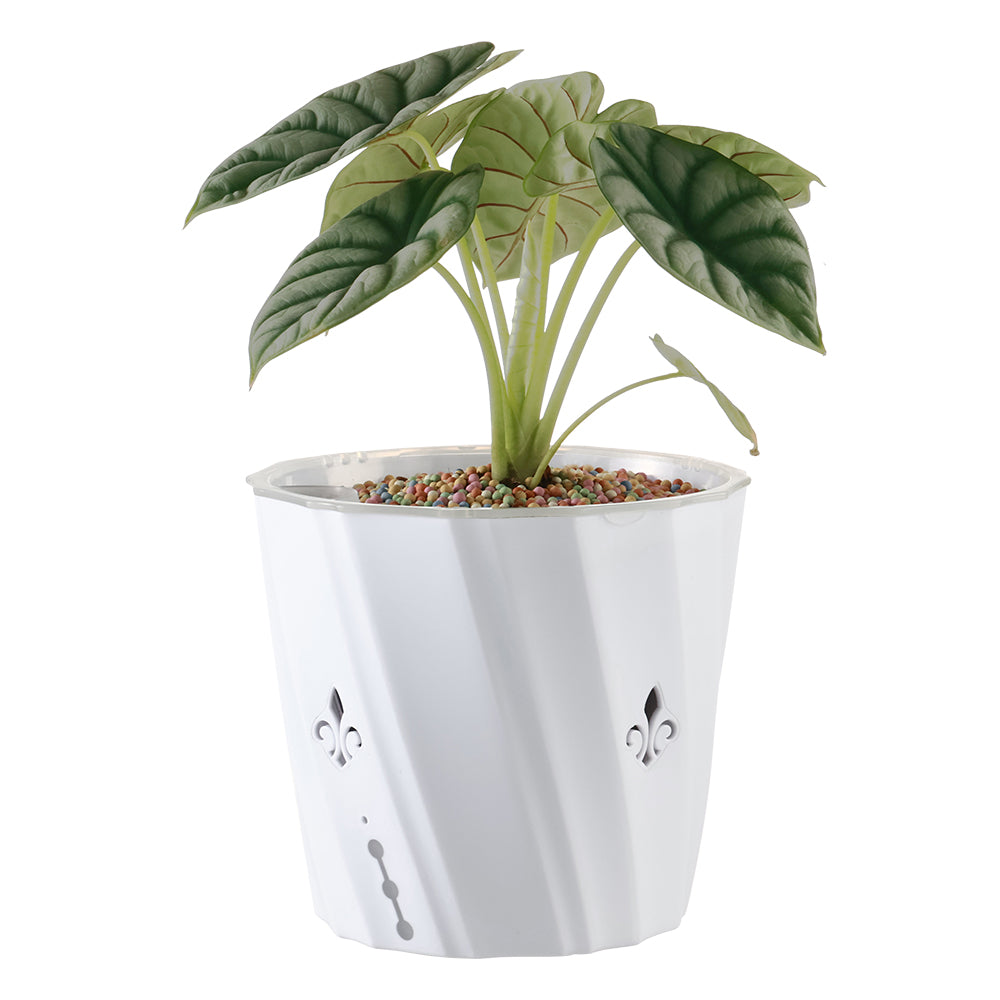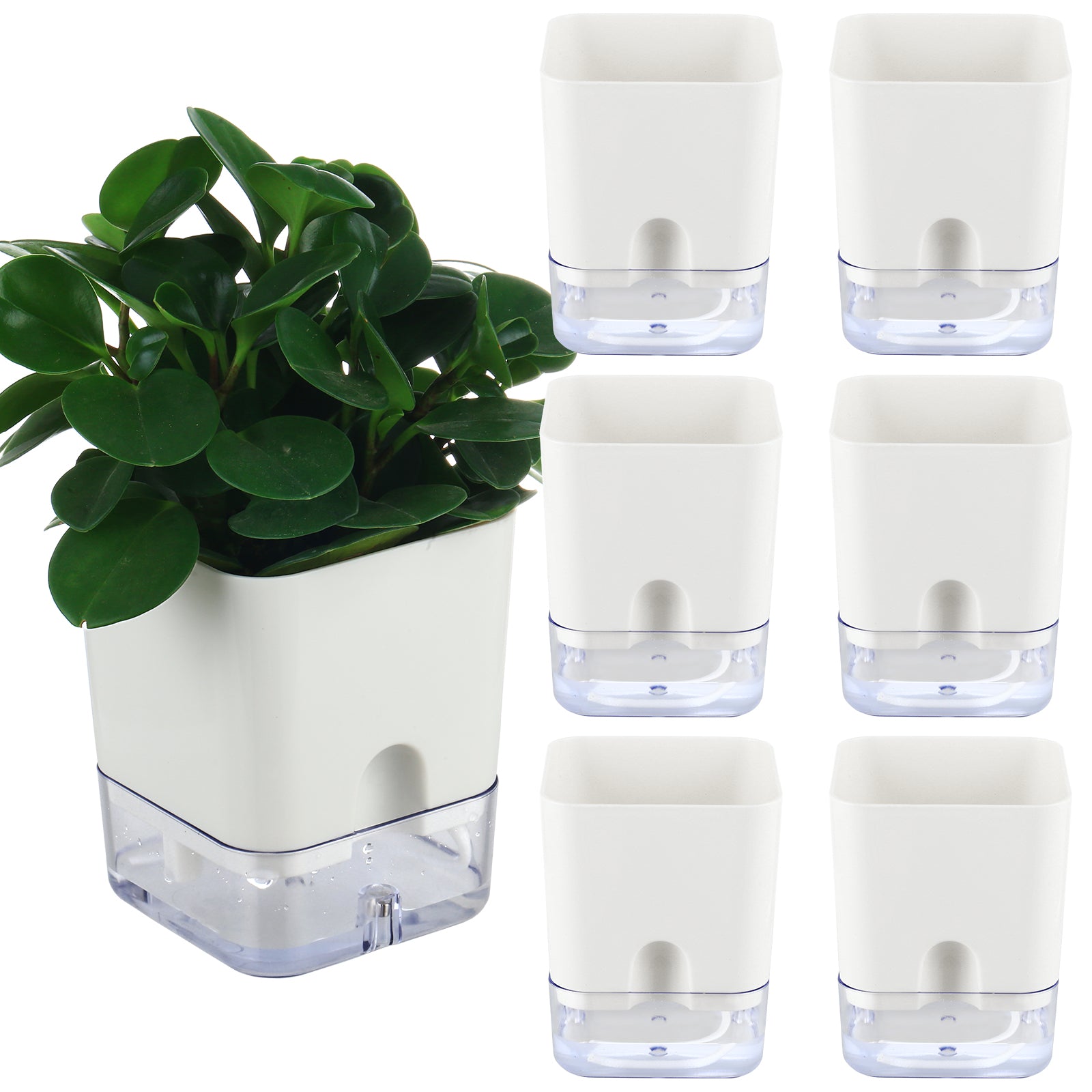Why My Orchid Leaves Drooping? 9 Common Causes and Solution
It is common for orchid owners to experience droopy leaves. In such a situation, there may be a root cause problem that needs to be addressed. Understanding why orchid leaves are drooping is essential for maintaining the health and vitality of these stunning plants.
The most common causes of droopy leaves in orchids include overwatering, underwatering, inadequate light exposure, extreme temperatures, root issues such as rot or damage, and nutrient deficiencies.
Self-watering orchid planter with holes can be helpful in preventing your orchids' leaves from drooping and wilting. Orchids are delicate plants that require specific care, including consistent moisture levels to thrive.
We will explore the various factors that can cause orchid leaves wilting, in this article.
Whether you are a seasoned orchid enthusiast or a beginner, this guide will help you diagnose and address the drooping leaf issue with confidence and expertise.
Let's take a closer look at how to fix droopy orchid leaves.
Common Causes of Droopy Orchid Leaves
Orchids are a stunning addition to any home or garden, with their exotic blooms and graceful foliage. However, if you notice that your orchid leaves are drooping, it can be a cause for concern.

Droopy orchid leaves can indicate that something is amiss with your plant's health or care routine. In this part, we will explore some of the common causes of orchid leaves limp and provide tips on how to fix wilting orchid leaves.
1. Overwatered Orchid Leaves
One of the most common causes of droopy orchid leaves is overwatering. Orchids are epiphytic plants, meaning they naturally grow on trees and absorb moisture from the air rather than the soil.
So, when they are exposed to excessive moisture, their roots can become waterlogged, leading to droopy leaves. To prevent overwatering, make sure to water only when the orchid potting mix is almost dry. Additionally, using a well-draining potting mix specifically designed for orchids can help prevent water retention.
2. Underwatering
On the flip side, underwatering can also cause orchid leaves to droop. Orchids need a consistent level of moisture to thrive, so if they are not receiving enough water, they will start to show signs of distress.
To avoid underwatering, it is essential to observe your orchid's watering needs carefully. Check the moisture level of the potting medium regularly, and water your orchid thoroughly when it is almost dry. However, be cautious not to let the roots sit in standing water, as this can lead to root rot in orchid.
Solution for Overwatering and Underwatering
If you're tired of constantly worrying about underwatering or overwatering your beloved orchid plants, then the orchid planter with holes might be the solution you've been looking for.
These innovative planters are designed specifically with orchids in mind, ensuring that your plants stay healthy and thriving. One of the key features of the Orchid self-watering planter is its use of the Orchid Pot With Holes.

Unlike traditional pots, these pots are specially designed to promote optimal orchid growth. If you're ready to take the hassle out of watering your orchids and provide them with the optimal growing conditions they deserve, consider investing in the Orchid self-watering planter.
With the Orchid self-watering planter, you can say goodbye to the stress of underwatering or overwatering your orchids. The self-watering system takes care of the watering for you, ensuring that your plants receive just the right amount of moisture to thrive.
3. Improper lighting
Orchids require the right amount of light to grow and develop properly. Insufficient light can weaken the plant and cause the leaves to droop. Conversely, excessive light can scorch the leaves and also lead to drooping.
Finding the perfect balance of light for your orchid may require some experimentation. Most orchids prefer bright, indirect light, so placing them near a window with filtered sunlight or using artificial grow lights can help provide optimal lighting conditions.
4. Temperature humidity fluctuations
Orchids are native to tropical regions, so they thrive in warm and humid environments.

Orchids prefer a temperature range where the nighttime temperatures are about 10 degrees Fahrenheit lower than during the day. Drastic temperature extremes and wide fluctuations can have a negative impact on these delicate plants, causing their leaves to droop.
Fluctuations in temperature levels can stress the plant, resulting in limp leaves. Avoid placing your orchid near drafts, air vents, or heating/cooling sources that can cause sudden temperature changes.
5. Humidity
Another important aspect of orchid care is maintaining the right humidity levels. Most orchids originate from humid native habitats, so it is crucial to mimic these conditions to keep them healthy.
Ideally, the humidity should be between 40 to 70 percent. If the air around your orchids becomes too saturated, you may notice beaded moisture on the leaves. On the other hand, if you find that the humidity is too low, there are a couple of solutions you can try.
Firstly, you can set the orchid pot on a layer of moistened gravel to create a microclimate with higher humidity. Another option is to install a humidifier in the room where the orchids are kept, ensuring a consistent level of moisture in the air.
6. Nutrient Deficiency
Orchids have specific nutrient requirements to support their growth and health. A lack of essential nutrients can weaken the plant, causing the leaves to droop.
To ensure your orchid receives adequate nutrition, use a balanced orchid fertilizer formulated specifically for these plants. Follow the instructions on the fertilizer package and apply it regularly, but avoid over-fertilizing, as this can damage the roots.
7. Air Circulation
Proper air circulation is essential for orchids as their leaves and aerial roots absorb moisture and nutrients from the air. Without adequate circulation, these delicate plants may suffer.

To ensure optimal air circulation, it is recommended to have open spaces with fans in the room where your orchids are located. Ceiling fans are ideal for this purpose, as they provide gentle air movement without directly pointing at the orchids.
However, if a ceiling fan is not available, a floor fan can work as well. Just make sure not to direct the fan's airflow directly onto the orchid, as this can cause damage. By providing your orchids with proper air circulation, you are creating an environment that promotes their overall well-being.
8. Pest Infestation
Lastly, wrinkled droopy orchid leaves can also be a result of pest infestation. Common orchid pests, such as spider mites, aphids, or mealybugs, can damage the leaves and cause them to wilt or droop.
Inspect your orchid regularly for signs of infestation, such as webs, sticky residue, or tiny insects. If you notice any pests, treat your orchid with an appropriate insecticide or try natural remedies such as neem oil or insecticidal soap.
9. Root Issues
The health of an orchid's roots is crucial for overall plant health. If the roots are damaged or diseased, the orchid may struggle to absorb water and nutrients, resulting in droopy leaves.
Gently remove the orchid from its pot and inspect the roots. Repot the orchid in fresh, well-draining orchid mix after trimming any orchid leaves soft, mushy, or discolored roots.
Overall, orchid leaves drooping can be a sign of various underlying issues, including overwatering, underwatering, improper lighting, temperature and humidity fluctuations, nutrient deficiency, or pest infestation. By understanding these common causes and taking appropriate action, you can help your orchid regain its vigor and beauty.
Conclusion
Droopy Orchid Leaves can be caused by various factors, including overwatering, underwatering, improper lighting, temperature extremes, pests, diseases, or even natural aging. It is important for orchid enthusiasts to closely monitor their plants and provide appropriate care to ensure healthy and vibrant foliage.
By understanding the potential causes of droopy leaves and taking the necessary steps to address them, orchid lovers can enjoy the beauty and vitality of their plants for years to come. Remember, providing optimal growing conditions and promptly addressing any signs of distress is key to ensuring a thriving orchid, as neglecting these issues can lead to the unfortunate dying of the orchid.
FAQs
How Do You Fix Limp Orchid Leaves?
To fix limp orchid leaves, it's important to identify the root cause. Limp leaves can be a sign of overwatering, underwatering, or inadequate humidity.

Adjusting the watering schedule, ensuring proper drainage, and increasing humidity levels can help revive the leaves. Furthermore, trimming any dead or yellowing leaves and providing proper light conditions can promote healthy growth.
Why Are My Orchid Leaves Droopy?
Orchid leaves can become droopy due to various reasons, including overwatering, underwatering, insufficient light, temperature extremes, or pest infestations. Proper watering, providing adequate light, maintaining appropriate temperatures, and keeping an eye out for pests can help prevent droopy leaves in orchids.
What Do Overwatered Orchid Leaves Look Like?
Overwatering can cause orchid leaves to turn yellow or become translucent. Additionally, they may feel soft and mushy, appearing limp or even developing a leathery texture, which can vary depending on the type of orchid.
What Happens to an Overwatered Orchid?
An overwatered orchid can suffer from root rot, which occurs when the roots are constantly submerged in water. This can lead to the roots becoming mushy and discolored, making them unable to absorb nutrients properly. Additionally, overwatering can cause the leaves to turn yellow or wilt, and the plant may become more susceptible to pests and diseases.
Will Wilted Orchid Leaves Recover?
Wilted orchid leaves may recover if the underlying issue causing the wilting is addressed. Factors such as overwatering, underwatering, improper lighting, or temperature extremes can lead to leaf wilting. By adjusting these conditions and providing proper care, the orchid leaves may regain their vitality.
Read More
Why Do Orchid Flowers Fall Off?
How Long Do Orchid Blooms Last?
Why Orchid Stem is Turning Yellow?
*Disclosure: This post may contain affiliate links. As an Amazon Associate I earn from qualifying purchases.
















Leave a comment